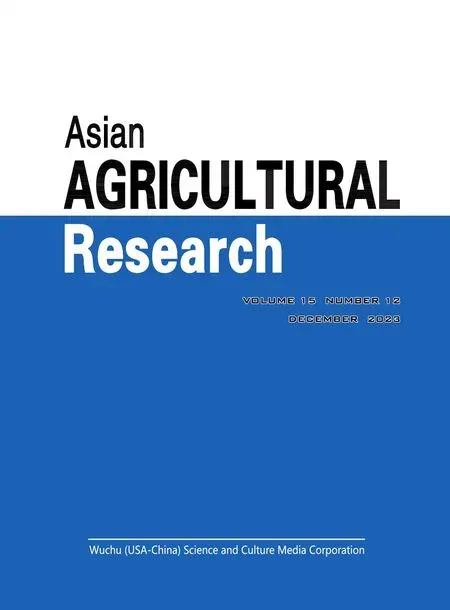Advances in Research of Biological Activity,Action Mechanism and Structure-Activity Relationship of Lentinan
2024-01-08JiawenLIChaoZHAOXiaojianGONGHuaguoCHENXinZHOU
Jiawen LI,Chao ZHAO,Xiaojian GONG,Huaguo CHEN,Xin ZHOU
Key Laboratory for Information System of Mountainous Areas and Protection of Ecological Environment,Guizhou Normal University,Guiyang 550001,China; Guizhou Engineering Laboratory for Quality Control &Evaluation Technology of Medicine,Guizhou Normal University,Guiyang 550001,China
Abstract Lentinula edodes is the second largest edible mushroom in the world and is widely used as food and medicine.Modern research shows that lentinan (LNT) is the main active component of L. edodes.It has anti-cancer,treatment of diabetes,intestinal protection,anti-inflammatory,anti-oxidation,anti-aging,hepatoprotective,immune-regulating effects.In this review,the biological activity,action mechanism and structure-activity relationship of LNT in recent years are reviewed.On this basis,the existing problems were discussed,and the future research and application of LNT were prospected.Finally,it is hoped that this review will promote the in-depth study of LNT and provide a reference for its development as a drug and functional food.
Key words Lentinan,Biological activities,Action mechanism,Structure-activity relationship
1 Introduction
Shiitake mushroom[Lentinulaedodes(Berk) Sing],also known as shiitake and shioshin,belongs to the genusShiitakein the family of white mushrooms (portulaca) (Tricholomaceae)[1],and is the world second-largest cultivated edible fungus,accounting for about 25% of global production[2].As early as in theCompendiumofMateriaMedica,it is recorded that shiitake mushroom has the effect of "sweet,flat,non-toxic,can benefit qi and not hunger,cure the wind and break the blood,dissolve phlegm,benefit the taste and help food,and manage the incontinence of urination".Shiitake mushroom,as a medicinal food[3],has high nutritional value and contains a variety of biologically active compounds,lentinan (LNT),dietary fiber,ergosterol,vitamins B1,B2,and C,folic acid,niacin,and minerals[4].Beginning with the first extraction of shiitake crude polysaccharide from shiitake mushroom by hot water extraction method in 1969 and proving its activity in inhibiting sarcoma in mice[5],a large number of scientific experiments have been carried out since then with LNT as the target to study its extraction method,biological activity and structure.In this paper,we reviewed the activities of LNT from anticancer,treatment of diabetes,intestinal protection,anti-inflammatory,antioxidant,anti-aging,hepatoprotective,immunomodulatory and so on,with a view to provide a reference for the further development,utilization and in-depth research of LNT.
2 Biological activity of LNT
2.1 Anticancer activityDespite our growing understanding of cancer,the prevalence of cancer continues to increase each year[6].Data from the World Health Organization (WHO) in 2020 indicated that there were nearly 19.3 million diagnosed cases of cancer and approximately 10 million cancer deaths worldwide,with the top five diagnosed cancers being: breast (11.7%),lung (11.4%),colorectal (10.0%),prostate (7.3%),and stomach (5.6%)[7].Traditional cancer treatments include surgical resection,chemotherapy and radiotherapy.Among them,surgery and radiotherapy are more damaging to the human body,and chemotherapy also causes unavoidable damage to the body during treatment,such as hair loss and gastrointestinal toxicity[8].In recent years,natural products have become a top priority in the development of anticancer drugs due to their well-defined anticancer effects and abundant candidate resources[9],so it is important to search for natural anticancer products that are safe,efficient,with few side effects and highly targeted.According to studies,LNT has certain biological activities against pancreatic cancer,thyroid cancer,human glioma,leukemia,colorectal adenocarcinoma,hepatocellular carcinoma,cervical carcinoma,prostate cancer,and breast cancer,and exerts its anticancer activities mainly through value-added inhibitory effects,cell cycle modulation,inhibition of cell migration,induction of apoptosis,and activation of immune cells.Therefore,LNT can be used as a natural antitumor agent in cancer symptom reduction drugs or and functional food industry.The action mechanism and effects of antitumor activity of LNT are shown in Table 1.
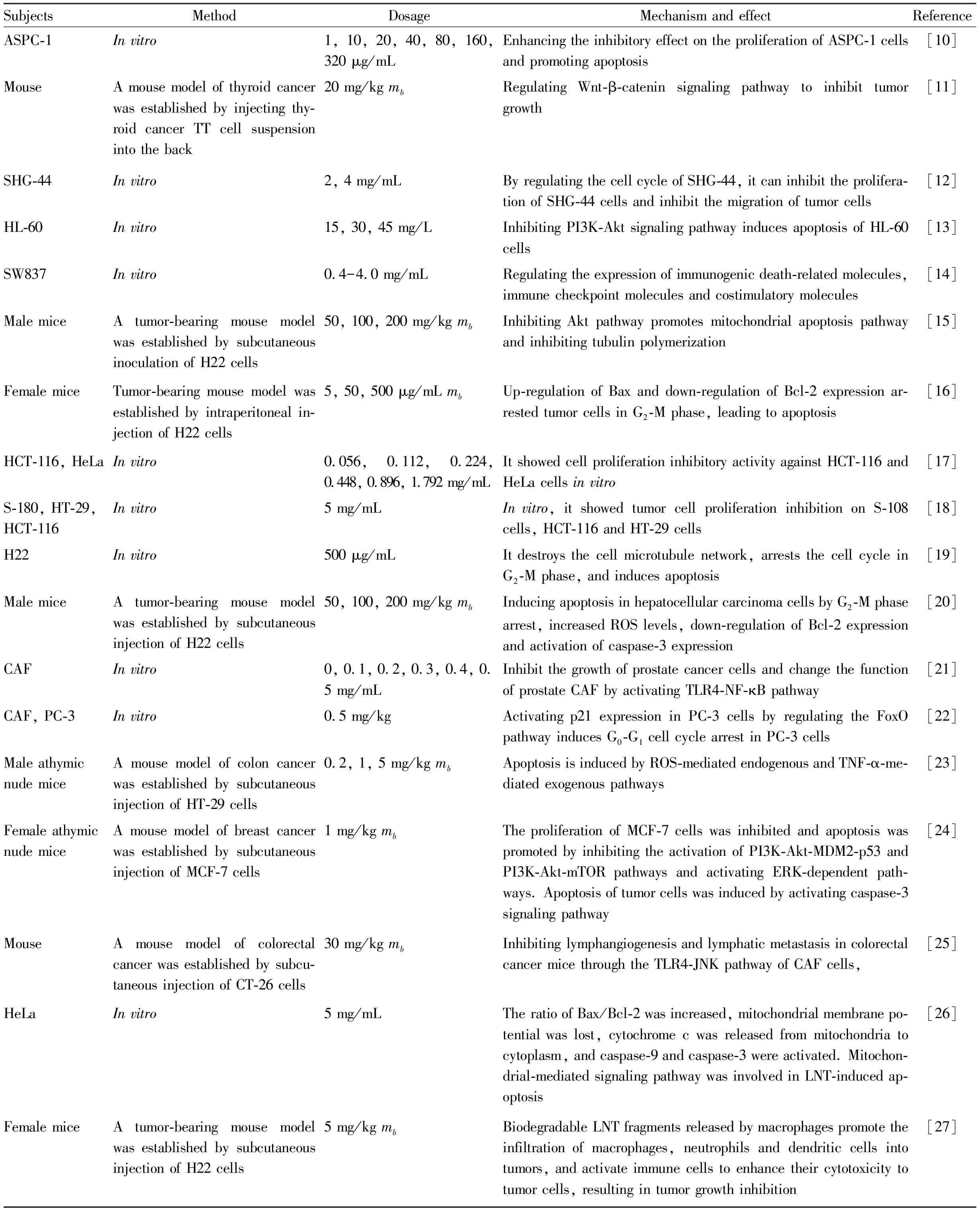
Table 1 Recent studies on anti-cancer effect and action mechanism of LNT
2.2 Therapeutic diabetic activityDiabetes mellitus (DM) is a chronic metabolic disease with abnormally elevated blood glucose levels,and more than 400 million people worldwide suffer from diabetes mellitus,and its morbidity and mortality rates have been on the rise year by year,while the most common cause of death is chronic complications,which are most fundamentally vascular[28-29].Studies have shown that LNT attenuates high glucoseinduced oxidative stress and apoptosis in human umbilical vein endothelial cells (HUVEC) by modulating the ROS-p38-MAPK pathway,reverses type 1 diabetes by stimulating the production of regulatory T cells from CD4+T cells,reverses type 1 diabetes by activating the Nrf2-HO-1 signaling pathway to regulate streptozotocin (STZ)-induced type 2 diabetes (Table 2).Therefore,the study of the action mechanism of LNT in the treatment of diabetes,alleviation of diabetic complications,and protection of pancreatic cells is of potential research significance for the development of it as a therapeutic or adjunctive drug for the treatment of diabetes,as well as for the development of it as a nutraceutical product with a pancreas-protective effect.
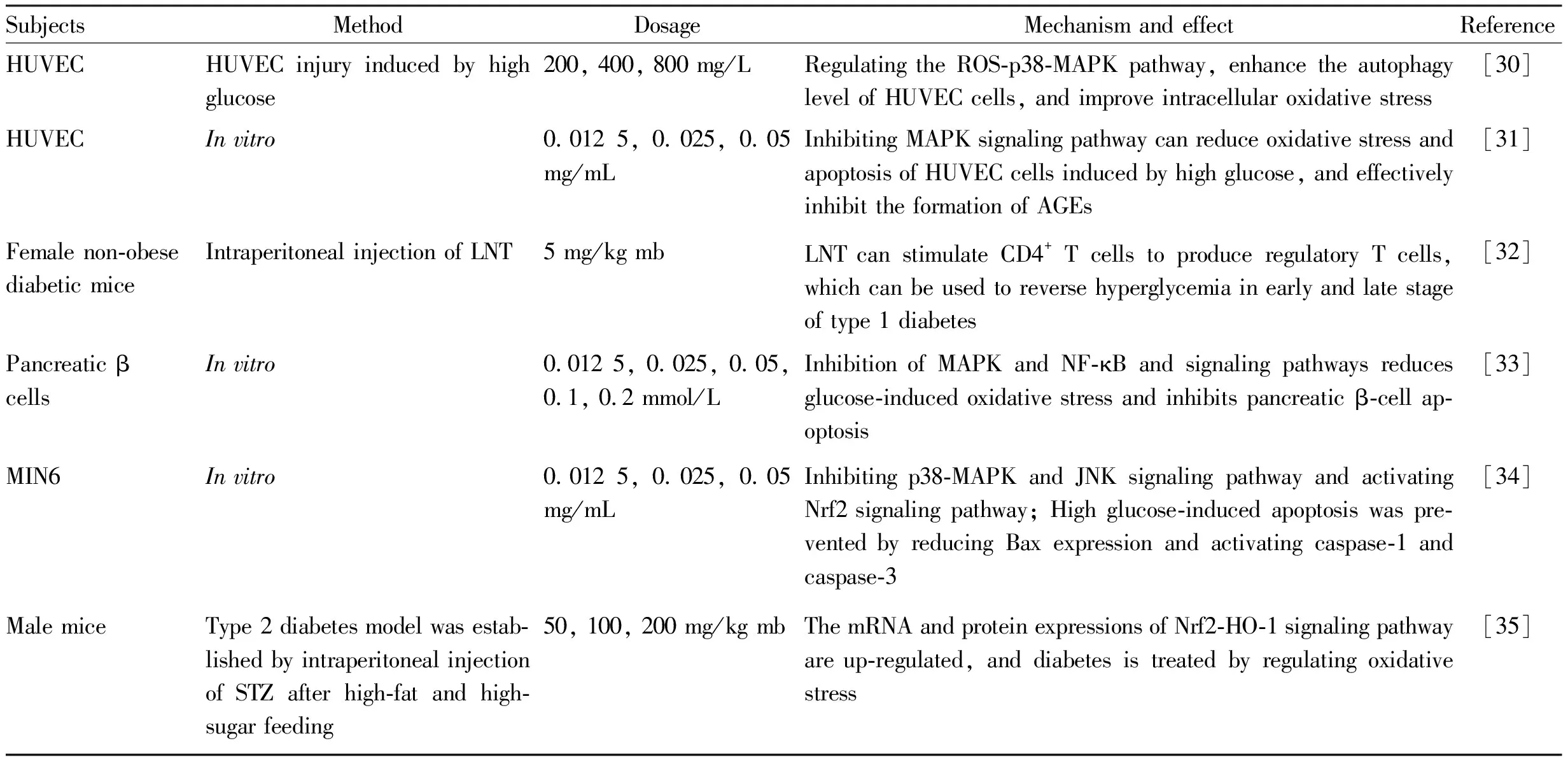
Table 2 Recent studies on treatment of diabetes effect and action mechanism of LNT
2.3 Enteroprotective activityThe gut microbiota plays a crucial role in host cell metabolism,pathogen resistance,and immune organ development and can be modified by dietary changes[36].LNT was found to slow down rotavirus (RV)-induced diarrhea by improving ileal mucosal immune function,increasing antioxidant capacity,and decreasing apoptosis; ameliorate lipopolysaccharide (LPS)-stimulated jejunal cell death by modulating key genes of programmed necrosis,pyroptosis,and autophagy signaling pathways; and can shift the overall composition of the intestinal flora from thick-walled phylum-dominated to bacillus-mimetic phylum-dominated to regulate intestinal microbial dysbiosis; in addition,it can alter the NF-κB signaling pathway to improve the morphology of colon tissues and reduce the pro-inflammatory cytokines in antibiotic-induced intestinal microbial dysbiosis in mice (Table 3).Therefore,LNT is highly likely to be a natural agent for the treatment of bacterial viral intestinal damage and may be a good prebiotic supplement to protect the gut by improving the composition of the intestinal flora.

Table 3 Recent studies on intestinal protection effect and action mechanism of LNT
2.4 Anti-inflammatory activityInflammation is a natural protective response of the innate immune system in response to injury or external stimuli such as allergens,pathogens,infections,and irritants[42-43].Studies have shown that LNT has good anti-inflammatory activity,and it can inhibit high-fat diet-induced adipose tissue inflammation,Klebsiella-induced pneumonia,2,4-dinitrochlorophenyl ethanol and dextran sodium sulfate (DSS)-induced colitis,LPS-induced mastitis,and septic shock,etc.The mechanism of LNT anti-inflammatory activity is mainly as follows: inhibiting the RIPK1-RIPK3-MLKL signaling pathway,regulating the activation of NOD-like receptor thermal protein domain associated protein 3 (NLRP3) and inhibiting the activation of the Wnt-β-catenin pathway.The therapeutic effect of LNT on inflammation is multi-targeted,and it can treat a variety of inflammatory responses induced by different modalities,but the relevant experiments are cell or animal model experiments,and there is a lack of relevant clinical trial data,so the mechanism of anti-inflammatory activity of LNT can be further investigated,to provide theoretical support for its use as a clinical trial,which is expected to become a new natural anti-inflammatory drug.The action mechanism and effect of the anti-inflammatory activity of LNT are shown in Table 4.
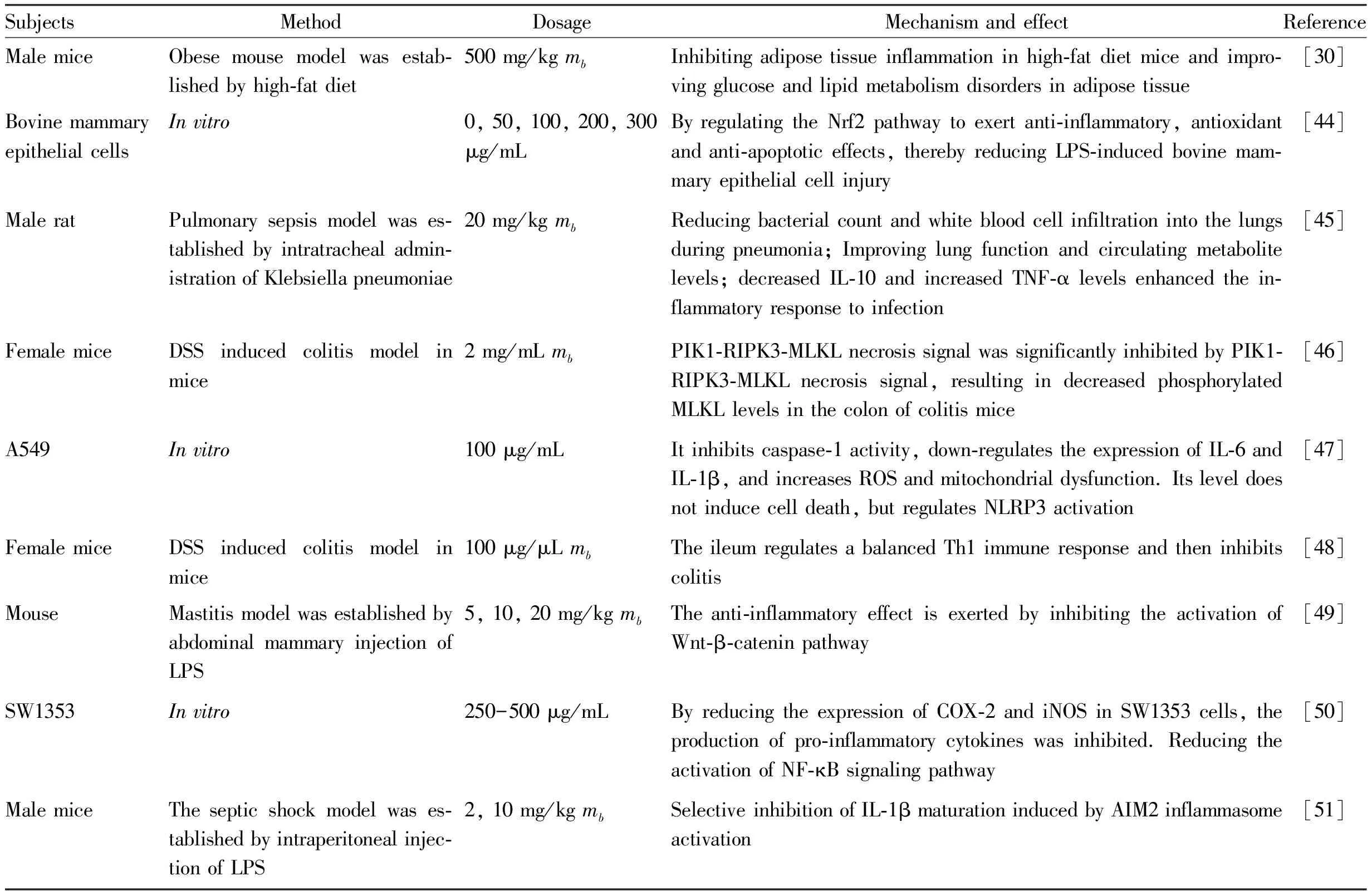
Table 4 Recent studies on anti-inflammatory effect and action mechanism of LNT
2.5 Antioxidant and anti-aging activityOxidative stress,an adverse reaction caused by ROS,is a major factor contributing to aging and various age-related diseases in humans and other animals[52].Studies have shown that LNT possesses antioxidant and anti-aging activities.LNT protects against H2O2,benzo(a)pyrene-induced damage to human immortalized keratinocytes (HaCaT); improves the antioxidant capacity of loach under ammonia-nitrogen stress; extends the lifespan ofCryptobacteriumhidradiinematodes and protects the nematodes by its antioxidant capacity from oxidative stress; and reversing age-altered gut microbiota structure.In addition,the antioxidant capacity of LNT may have applications in the field of sperm cryopreservation.During processes,such as freezing and thawing of semen,ice crystal formation,osmotic imbalance,and oxidative stress can occur,causing irreversible damage to sperm[53].In contrast,LNT can reduce malondialdehyde (MDA) content in semen,elevate total antioxidant capacity (T-AOC) and total glutathione (T-GSH),activate spermatozoa’s own antioxidant system,and improve sperm viability and acrosomal integrity after thawing of frozen spermatozoa.Sperm viability and acrosome integrity after thawing of frozen spermatozoa[54].The action mechanism and effect of LNT antioxidant and anti-aging activities are shown in Table 5.

Table 5 Recent studies on anti-oxidation and anti-aging effect and action mechanism of LNT
2.6 Hepatoprotective activityThe liver is a major metabolic organ in vertebrates and other animals,responsible for primary detoxification,and has a variety of functions in the body,including glycogen storage and catabolism,erythrocyte catabolism,phagocytosis,and detoxification.Therefore,the liver is susceptible to damage caused by various toxins or metabolites[60-62].Studies have shown that LNT has hepatoprotective activity and has therapeutic effects on high-fat-induced nonalcoholic fatty liver disease,sodium arsenite-induced hepatotoxicity,and LPS-induced liver injury,and its action mechanism includes activation of the PPARα pathway,reduction of oxidative stress and apoptosis,and participation in tumor necrosis factor receptor superfamily member 4 (OXF4),which is the most effective and efficient way to prevent liver damage.Superfamily member 4 (OX40) or IL-17A down-regulation,activation of Nrf2 and quinone oxidoreductase 1 (NQO1) signaling pathways can enhance antioxidant capacity and inhibit lipid peroxidation progression (Table 6).Therefore,LNT can be utilized to develop into nutraceuticals with hepatoprotective effects or natural preparations for clinical treatment of liver injury.

Table 6 Recent studies on hepatoprotective effect and action mechanism of LNT
2.7 Immunomodulatory activityIn recent years,immunotherapy has attracted the attention of many researchers,which can protect the organism from cancer by stimulating immune effector cells such as,lymphocytes,macrophages,neutrophils,natural killer cells,and dendritic cells to target abnormal antigens expressed on the surface of tumor cells[66].In addition,oral administration of some bioactive macromolecules induces intestinal mucosal immunity,a primary response that is extremely important in the induction of immune tolerance and innate immunity against intracellular pathogens[67-69].
Studies have shown that LNT has immunomodulatory activity,and the mechanisms by which LNT exerts its immunomodulatory activity ininvitrocellular assays are: (i) by regulating the decrease in the level of chemokine ligand-2 (CCL-2); (ii) by regulating the MAPK signaling pathway.The mechanisms of action in animal studies are: (i) immunosuppressive mouse model of cyclophosphamide (CTX),up-regulating the proportion of activated T cells,the number of M cells in Peyer’s patches (PPs) and their enhanced antigen-transferring ability; and (ii) mouse model of S-180 tumors,which induces NO production,activation of macrophage phagocytosis,induction of lymphocyte proliferation,and upregulation of CD4+T cell levels in lymphoid organs; (iii) a mouse model of breast cancer,by decreasing the expression of IL-35,increasing the secretion of interferon-γ (IFN-γ),and promoting the cellular activity of CD4 Th,and T helper cell 17 (Th17); (iv) a mouse model of breast cancer in Normal mice,which significantly enhanced the immune response by affecting gene expression in the small intestine,cecum,and colon (Table 7).In addition,it has been shown that covalent attachment of LNT to multi-walled carbon nanotubes enhances the immunoreactivity of LNT,and that the nanotube structure allows rapid access to dendritic cells and induces phenotypic and functional maturation of dendritic cells[70].Therefore,the immunomodulatory activity of LNT can be fully utilized to develop it to be a health food with immune-enhancing effects or a therapeutic drug for clinical immunotherapy.
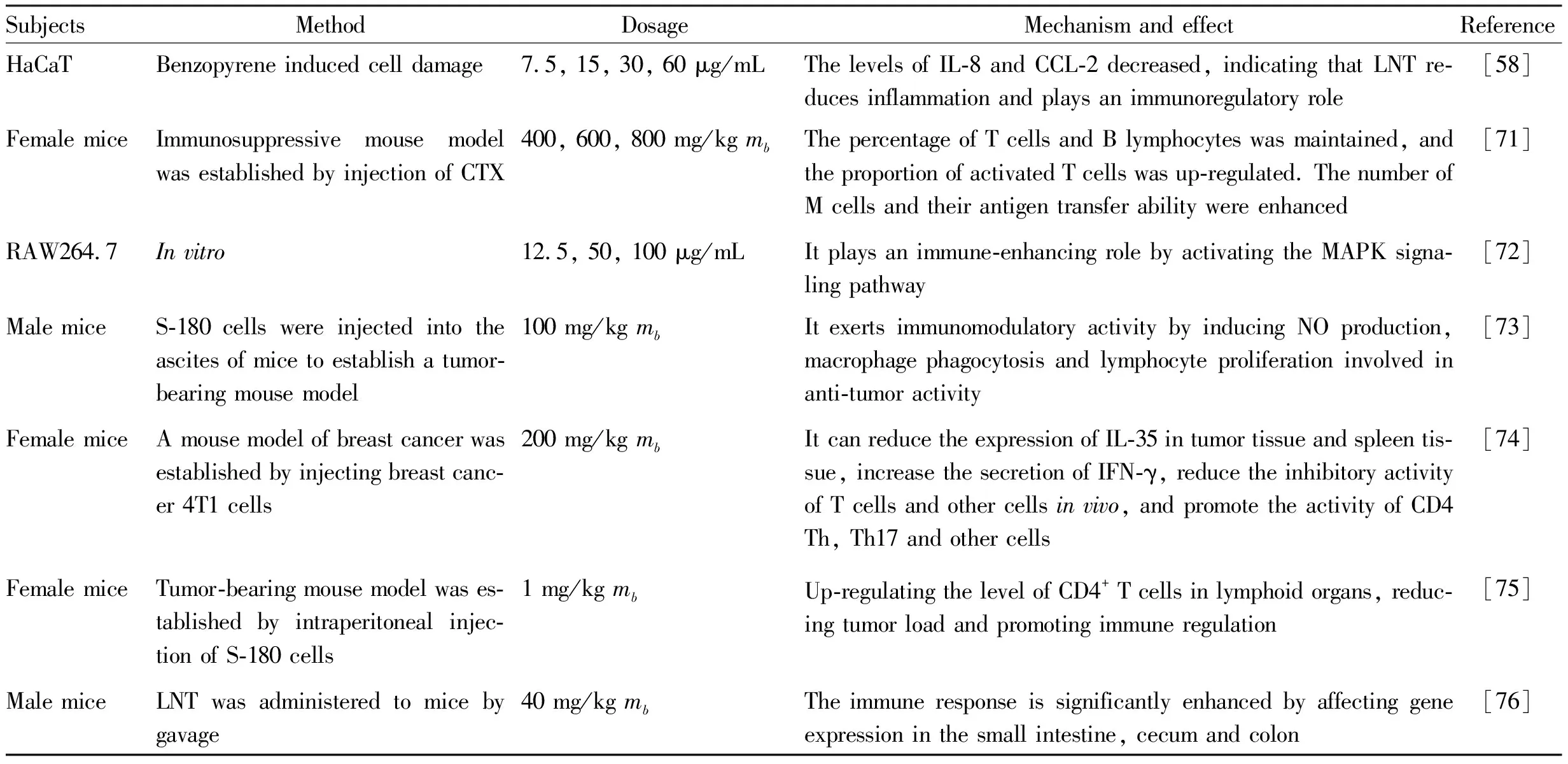
Table 7 Recent studies on immune-regulating effect and action mechanism of LNT
2.8 Other activitiesIn addition to anticancer,diabetes treatment,intestinal protection,anti-inflammatory,antioxidant,anti-aging,hepatoprotective,and immunomodulatory activities,LNT also has antirespiratory infections,protection against lung and kidney damage,enhancement of bone metabolism,antiviral,alleviation of depression,alleviation of myelosuppression,neuroprotection,and improvement of cognitive disorders,and its action mechanism and effects are shown in Table 8.When LNT and epirubicin are used in combination,LNT has a direct potentiating effect on the killing of bladder cancer cells by epirubicin[77].In addition,a study added LNT to the feed of European eel,which promoted the growth of European eel,and also lowered blood lipids and improved liver health[78]; LNT was used as a seed dressing to plant wheat seeds,which effectively prevented and controlled wheat sharp eye spot[79].In addition,in a study,researchers conducted an interesting experiment to utilize the property that the chemical and nutrient composition of shiitake mushrooms change significantly when they are grown on different substrates,and researchers replaced the traditional shiitake mushroom medium with astragalus to obtain a kind of astragalus shiitake mushroom,and the study showed that this LNT had betterinvitroanti-proliferative activity against colon cancer HCT-116 cells[80].

Table 8 Recent studies on other biological activities and action mechanism of LNT
3 Structure-activity relationship of LNT
LNT is a glucan molecule with β-D-(1→3)-Glc as the main chain and 1→6 and 1→3 linked glucose residues as the side chains[95].The bioactivity of LNT is closely related to its spatial structure,molecular mass,and molecular composition,and in addition,chemical modifications have a greater impact on the bioactivity of LNT.Therefore,it is valuable to explore the structure-activity relationship of LNT to elucidate how its complex structure exerts its biological activity.
3.1 Spatial structure and molecular mass of LNT in relation to its activityZouetal[75]extracted polysaccharides from shiitake mushrooms of three different periods,autumn-grown mushrooms (AG),spring-grown mushrooms (SG) and cultivated-grown mushrooms (CG),AG and SG existed in a network-like form,in contrast to CG which did not form a network but existed as random aggregates,and AG which was in a network-like form showed a higher tumor-inhibitory activity than CG,which did not form a network-like form.Wangetal.[96]isolated five types of LNTs and studied them and found that LNTs with high molecular weights (617.6 and 638.7 kDa) were more effective in inhibiting the proliferation of tumor cells than the other ones with low molecular weights (97.57,273.8 and 151.3 kDa.) Zhaoetal.[17,87]and Zhangetal.[20]showed that LNT with molecular weight between 200 and 800 kDa had better tumor cell proliferation inhibitory activity.As a natural macromolecular compound,the spatial structure and molecular weight of LNT are two important evaluation indexes.LNT with network shape and high molecular weight is more advantageous in anti-tumor cell proliferation inhibitory activity.
3.2 Relationship between the molecular composition of LNT and its activityShiitake mushroom has a strong ability to absorb metal ions in the medium,and the extracted LNT often contains various metal ions such as,Mg,K,Ga,Zn,etc.Qianetal[97]removed the metal ions from LNT and obtained deionized LNT to explore the activity of LNT before and after deionization,and the study showed that,after removing the intrinsic metal ions,the antioxidant capacity of polysaccharides was reduced,and their inhibitory effect on the tumor cell proliferation was inhibition of tumor cell proliferation was weakened.Therefore,the metal ions present in LNT are its important components,and its antioxidant capacity and anti-tumor proliferation activity are closely related to the metal ions.
3.3 Effect of chemical modifications on LNT bioactivity
Kaletaetal[98]and Klimaszewskaetal[99]found that LNT selenated had stronger antioxidant activity and immunostimulatory activity,and that selenated LNT increased cell viability and enhanced cytotoxicity against cancer cells.Wangetal[100]and Wang Jetal[101]found that sulphated LNT,compared with unsulphated,possessed stronger antibacterial activity,antiviral infection activity and inhibition of tobacco mosaic virus proliferation activity in a dose-dependent manner.Wangetal[102]found that zincation-modified LNT possessed stronger anti-aging activity andinvitroantioxidant activity.In conclusion,different ways of chemical modification can have a large impact on the biological activity of LNT.In contrast to unmodified LNT,its derivatives tend to have more biological activities or enhanced on the basis of existing activities.Therefore,exploring the effect of modifying groups on the activity of LNT can provide a theoretical basis for the development of LNT derivatives with specificity.
4 Conclusions
LNT has been used clinically in adjuvant cancer treatment and postoperative tumor therapy,and related nutraceuticals and injections have appeared.However,compared to its many biological activities (e.g.,anti-inflammatory,antioxidant,and intestinal protection,etc.),LNT still has great value for development and utilization.Since the discovery of LNT,there have been many studies on its biological activity,action mechanism and molecular structure.However,due to the influence of many factors,such as the extraction method and the mushroom substrate itself,the molecular weights of the different components of LNT are irregular,the molecular structure is complex,the efficacy of the different levels of action,and the relationship between the structure and the bioactivity is not easy to conclude,which has constrained the in-depth study of LNT.It is difficult to have a unified standard for the evaluation of LNT,which is also the reason why most countries prohibit the use of LNT in clinical practice.
In view of the existing problems of LNT,the research on LNT can be started from the following aspects: (i) On the basis of the existing studies,the multilevel structures of different components of LNT can be clarified,and the connection between its structure and biological activity can be deeply investigated.(ii) For chemically modified LNT,the influence of the modifying groups on the structure and biological activity of LNT can be investigated at the molecular level.(iii) It has been reported that the combination of LNT with other drugs can enhance the therapeutic effect of the drug,and the activity of the vaccine can be enhanced.LNT can enhance the therapeutic effect of drugs and the activity of vaccines.Therefore,the action mechanism of LNT when used as a supplement can be explored to fully investigate the bioactivity of LNT.(iv) According to a few studies,it has been reported that changing the medium of shiitake mushrooms can change the bioactivity of LNT,for example,when shiitake mushrooms are cultured on astragalus,the LNT obtained has more significant antiproliferative activity,therefore,the change of the medium can be investigated for its influence on LNT bioactivity.Therefore,it is possible to investigate the effect of the change of culture medium on the biological activity of LNT,which will provide new ideas on how to obtain LNT with better biological activity.(v) With the development of the society,people pay more attention to the green and natural products that are beneficial to human health,and the development of LNT extracted from shiitake mushrooms,which is a medicinal and food component,into health care products,functional animal feeds,and plant seed dressings will be the trend of the development in the future.In conclusion,the research on LNT still needs to be supplemented by a large number of more in-depth studies.
杂志排行
Asian Agricultural Research的其它文章
- Strategies for High-quality Development of Greenhouse Vegetables in Zibo City,Shandong Province
- Study on the Cultivation Problems and Strategies for New Professional Tobacco Farmers in China
- Construction Method of Ideological and Political Theories Teaching in the Course of Environmental Microbiology for Environmental and Ecological Engineering Major
- Effects of Different Sterilization Conditions on Active Components and Flavor of Apple Vinegar
- Expression Characteristics of AaHsp90 Gene in Antheraea assamensis under Different Temperature and Starvation Stress
- Roles of Corporate Reputation and Service Recovery in Food Safety Crises: A Case Study of Food Hygiene Incidents in Hot Pot Restaurants
